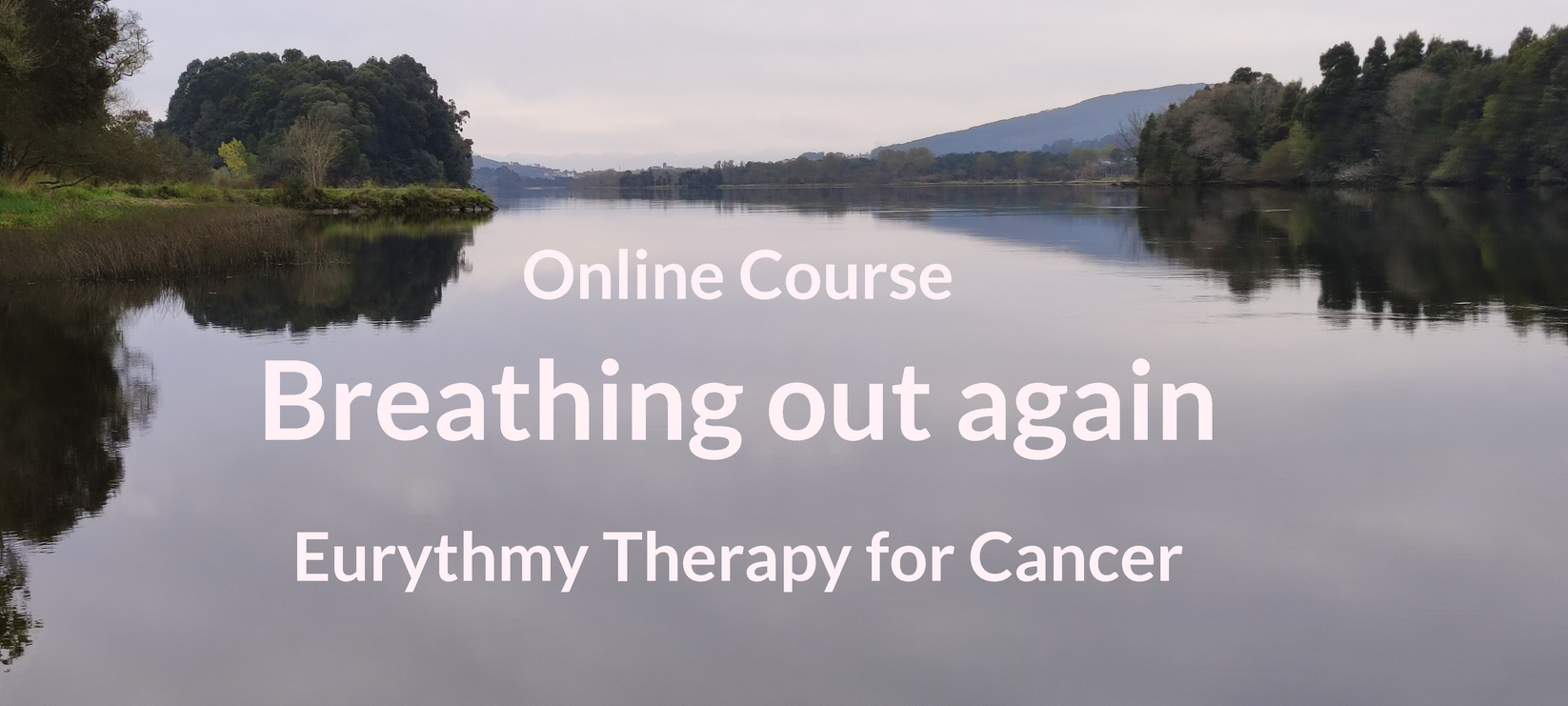What role does breathing play in cancer therapy?

I would like to try to show the points of view from which we approach a eurythmy therapy online course. Statements by Rudolf Steiner can be found at the bottom of the post.
In anthroposophic medicine, it is assumed that the rhythm of inhalation and exhalation is disturbed at the place where the cancer occurs. Swallowed tears, pent-up suffering and the effects of shock lead to the inhalation being locally overemphasized, which can cause mental and physical fear, tightness and feelings of suffocation and trigger carcinogenic processes. There is a quote from Rudolf Steiner, the founder of eurythmy therapy: "The overgrowth of inhalation over exhalation leads to cancer in the human organism."
When speaking of breathing, it is important to distinguish four different types of breathing:
- Physically: With the externally perceptible lung breathing, the chest rises and falls, the abdomen expands and contracts, the tips of the lungs rise and fall.
- Chemical respiration occurs through the diffusion of carbon dioxide and oxygen between the blood and air as the blood in the alveoli spreads across the football-field-sized surface of the lungs. And it happens deep in the body when the blood flows in the finest capillaries over the organ surfaces and exhales the oxygen to the organs and inhales carbon dioxide from them.
- Soul respiration occurs within chemical respiration. Lifted and protected by the breath, the sensitive soul flows through the body and connects with life. We exhale carbon dioxide when we release it into the environment via the surface of the lungs.
- We exhale oxygen when we deliver the oxygen to our organs below in our organism. Down there we practice letting go. Because our attitude to life is connected to oxygen. The ability to consciously let go is a main quality of the ego.
In our course we use the so-called Warming Sequence of eurythmy therapy, the standard set of movements for cancer: O-E-M-L-I-B-D
The exercises work because
- I do them slowly
- I make them intimate
- I am in contact with the body
- I stay relaxed
- trying is enough
These qualities are preconditions for a relaxed inner breathing taking place.
The seven exercises deepen the breath in a different way each time. Simply by noticing it:
- Dedication
- Protection
- Balance
- In the here and now
- I feel myself
- I get protection
- I find roots in myself
Through their sevenness the exercises also touch the great path on which I walk. From the inside, from the outside. Like a musical scale.
Additional background information for eurythmy therapists
Statements by Rudolf Steiner on breathing in eurythmy therapy
As early as 1913, at the time when Rudolf Steiner was developing eurythmy, he explained that today we have the task of overcoming the constriction and drying up of our life forces, the etheric body. By expanding the etheric body, we can intensify our breathing, but we should not stop there but breathe through the blood forces.
According to Rudolf Steiner, it is appropriate that with this self-expanding “a somewhat increased sense of self and perhaps even a subtle need for spiritual self-enjoyment arises, it just shouldn’t go as far as arrogance and vanity, since one elevates oneself to spiritual beings, which can only descend to the etheric body and not to the physical body. [1]
In 1921, when Rudolf Steiner was teaching eurythmy therapy for the first time, he continued: When the ego and the astral body quietly emerge from the body while doing eurythmy, it stimulates “the forming power of the organs, so that the human being becomes a better breather and a better digester inwardly.”[2]
In eurythmy therapy, the movement of the whole person must work its way into the breath. Because this happens differently with every person, one should observe the change in breathing of the person one wants to help while doing eurythmy and then ask him to consciously continue this tendency. [3]
A short time later he once again emphasized the importance of the inner breath for health: "If the oxygen does not go through our body properly, then the carbon does all sorts of things wrong... We walk around and now feel it as an effect of the earth. We just need to be protected from that. We actually only live because we are constantly protected from the earth and its influences when we breathe. [4]
Application in eurythmy therapy
In order to comply with the request from the eurythmy therapy course to strengthen the breath, such explanations can provide valuable information. If one observes the breath, as Rudolf Steiner suggests, and asks the client to experience and consciously continue his tendency, it is not a question of coming to the perception of outer etheric experiences through the breath. It's about breathing deeply with what can only descend into the etheric body.
References
[1] Rudolf Steiner, Transformation of Judgment, Feeling and Will, The Hague, March 24, 1913, Fifth Lecture in: What is the significance of man's occult development for his shells (physical body, etheric body, astral body) and his self? GA 145
[2] Rudolf Steiner, Eurythmy Therapy, Sixth Lecture, April 17, 1921, GA 315
[3] Rudolf Steiner, answering questions, April 18, 1921, 2nd Medical Course GA 313, p. 166f and: Eurythmy Therapy GA 315, p. 106f.
[4] Rudolf Steiner, The life of the soul in the breathing process, December 23, 1922, GA 348, Lecture 8, p. 152f







































